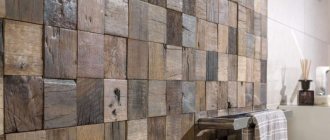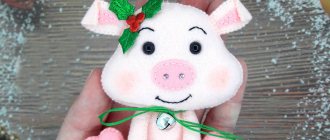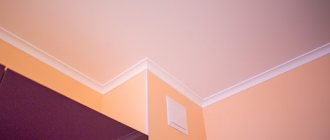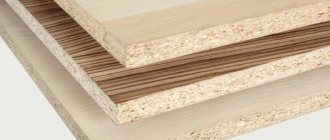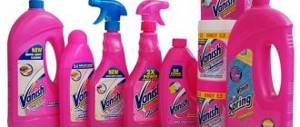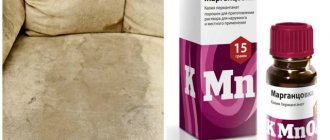Why do tape marks remain?
The action of adhesive tape is due to such a phenomenon as adhesion (adhesion).
Acrylic adhesive quickly sets to any materials, and the durable base of the tape helps to hold fastened fragments. For different areas of application, products are produced with several degrees of adhesion. Low – with masking tape. It can be easily wiped off furniture and leaves virtually no residue of the connecting substance behind. The most popular type is plumbing tape. It has a thicker sticky layer. Over time, the glue eats more deeply into the surface of objects, and high ambient temperatures intensify the process. As a result, when removing the fastening tape, the polypropylene base is difficult to tear off from the fixed coating, and the acrylic mass remains on the furniture, which is difficult to wipe off.
Dust and dirt instantly settle on sticky areas, making them visible to the naked eye. It is impossible to wash the tape with ordinary water.
Emergency removal methods at home
If you need to quickly remove tape and traces of it, emergency methods based on the use of improvised means are used.
White Spirit
Solvent cleaning is very effective, but not safe . It can be used on smooth surfaces with a coating resistant to external factors.
It is suitable for cleaning traces of adhesive tape on glass, metal, and plastic. However, it is better not to use White Spirit for leatherette upholstery and painted furniture.
The solvent must be applied very carefully.
This is done as follows:
- lightly moisten a soft cloth or cotton pad with solvent;
- rub intensively until the contamination disappears;
- Wash off any remaining solvent with a sponge.
If suddenly the surface being cleaned begins to lighten, the procedure should be stopped immediately. Instead of white spirit, you can use acetone or nail polish remover.
Alcohol-containing compounds
Ethyl, ammonia and medical alcohol, as well as vodka can cope with glue residues on plastic and glass.
As in the previous case, treating painted surfaces is not recommended - alcohol can dissolve the paint.
Alcohol is applied to the surface quite boldly . It will not harm glass and high-quality plastic.
But in the case of plastic, it is better to first try to treat a small area in an inconspicuous place. You don’t have to remove any remaining alcohol or simply wipe it off with a dry cloth.
Special means
If adhesive tape is often used in the house and traces of it can appear at any time, it is advisable to have a special means on hand to remove glue residues.
Glass cleaners containing alcohol, such as Mr. Proper and Mr. Muscle, can be used as special products for unpainted surfaces. They are sold in household chemical stores and cost between 100 and 250 rubles.
Today there are special products on sale for removing tape, glue and stickers from furniture. They can also be bought in a specialty store or ordered online. These include:
- "ASTROhim" ;
- "Liqui Moly"
- Scotch Remover.
Fresh adhesive residues from tape are much easier to remove than old ones.
Therefore, it is advisable to immediately address this issue as soon as it arises . In this case, you can use simple means that are found in every home.
Acetone - for upholstered furniture
The easiest way to remove adhesive substances from upholstered furniture is with acetone:
- Apply it to the sticky area.
- Dampen a cloth with detergent or regular soapy water.
- Wipe away any remaining tape.
- Finally, go over with a dry cloth to completely remove the marks.
Another useful article: How long do fresh champignons last in the refrigerator?
Abrasive paste - for glass
If there are traces of sticking on the glass of a sideboard or buffet, then it will be difficult to do without abrasive pastes. So:
- Be sure to wear rubber gloves, because after all you will have to work with a chemical substance - abrasive paste. It's better not to get it on your skin.
- Take a sponge and apply a little paste on it.
- Rub the sponge thoroughly over the remaining tape. Attention! Be sure to clean the sponge from time to time (with regular rinsing) from sticky particles and “used” paste;
- Finally, rinse the glass thoroughly and wipe dry.
Important! Abrasives are only safe for glass. They easily damage, rough, and scratch other surfaces.
Drill - for double-sided tape
Double-sided tape can be a real headache. It contains rubber and some other foam materials, thanks to which double-sided tape literally sticks tightly. But you can still remove the sticky material. To do this, you need to buy a special rubber attachment for the drill. Outwardly, it resembles a regular eraser and is designed specifically for removing particularly sticky substances. The nozzle does not pose a great danger to furniture. And you won’t need angelic patience, as in the case of a “manual” eraser - a drill will deal with sticky stains in no time.
Wash cleaning for motorcycle chains
Very quickly, traces of adhesive tape are dissolved by the product used to wash a motorcycle chain.
Unfortunately, even the cheapest products are too expensive to buy specifically for removing duct tape marks. This method is suitable for those who own a motorcycle and use such chemistry. It only takes a couple of drops of rinsing to remove stains. When using this method, you must avoid treating painted metal surfaces, since such chemicals can often dissolve the paint. Using any of the proposed methods for cleaning traces of adhesive tape, you can greatly facilitate and speed up this process. Most of the products that can be used are always on hand, so there is no need to buy anything special.
How to clean using household chemicals?
You can remove glue stains using cleaning products and detergents intended for other purposes.
Dishwashing liquid
This product can be used to clean almost any surface, except those that cannot be wet.
The method of use is simple:
- pour warm water into the ladle;
- add a few drops of detergent;
- moisten a sponge in the resulting solution;
- start rubbing.
The intensity of friction depends on the type of coating. So, polished or painted wood should be processed carefully, without strong pressure. And upholstery made of leather or leatherette can be well rubbed without fear of ruining it.
After treating with a soap sponge for 1-2 minutes, you should collect the foam with a clean rag and see if the tape comes off or not.
If it is not washed off completely, but the stain has decreased, the procedure should be repeated . If after rubbing the stain does not decrease, then you need to use another, more aggressive product.
Dry cleaning powders
The powder can be used to clean a hard, chemical and mechanically resistant surface. For example, this method is suitable for cleaning kitchen appliances or bathroom surfaces.
It is very easy to use:
- First, the powder is applied with a damp sponge;
- left for a few minutes;
- then rub the stain with the hard part of the sponge;
- during friction, the powder turns into a liquid soap mass, it should be washed off with water;
- if the stain has disappeared, the surface must be wiped dry;
- If the contamination remains, repeat the procedure until it completely disappears.
Glass products
If the product contains alcohol, it can be used to scrub an unpainted hard or soft surface . It is sprayed onto the contaminated area and then wiped with a sponge or soft cloth, depending on the type of surface.
After treatment, allow the stain to dry. And, if traces of glue remain, you need to do the procedure again.
Any chosen method, even the most gentle one, must first be tested on a small area of the surface.
Soap solution
You can remove glue stains using a solution of water and regular soap:
- the soap solution is applied with a sponge;
- the surface rubs a little;
- the remaining soap is washed off with a clean rag.
You can try to remove glue soaked in soapy water with a hard, non-sharp object, for example, a wooden kitchen spatula.
The main thing is the right approach
Remove traces of adhesive tape as soon as they are found. Sometimes it is enough to wipe the contaminated surface. The area cleared of tape will be no different from the rest of the area.
We recommend reading: How to quickly clean your iron from carbon deposits and scale
If the above methods do not help, you can only try the special product “For removing labels”. The liquid is sprayed onto the adhesive print and then wiped off with a rag.
So it’s not difficult to remove the adhesive base of the tape using improvised means. Choose the option that suits your case and act.
Folk recipes
The advantage of traditional methods is that there are many of them, and they are fundamentally different in the type of impact on pollution.
If emergency methods using improvised means do not help, you should use the experience of other people and try different methods until an effective one is found.
Soda
To remove sticky stains from furniture, regular soda is enough:
- Prepare baking soda and dilute it in water to form a paste that looks like sour cream.
- Apply “sour cream” to a sponge and rub it over the sticky spots.
- Rinse and dry.
Another interesting article: How to remove a handle from a leather sofa
Sunflower or olive oil
The oil perfectly removes stickiness from polished and painted surfaces:
- Dampen a clean cloth with oil.
- Rub the sticky spot thoroughly.
- Do not touch for 20 minutes until the sticky spot gets plenty of oil and begins to break down.
- Rinse with polish and clean with a spatula.
- Wipe with something dry (a paper towel will do) and say a long-awaited goodbye to the sticky miracle.
The disadvantages of this method are the same stink. Plus, if the surface is untreated wood, it is dangerous to rub oil on it - greasy stains may remain.
You can also wash away sticky marks with essential oil, which is sold in any pharmacy. But even after it the smell remains. True, it is much more pleasant than the aroma of sunflower, which will please only fetishists of this plant.
Eraser
The eraser not only erases various pencil smudges - it can also clean the places where you had to glue the tape without any problems. Do it in this way:
- Take an eraser and hit the remains of the sticky miracle until you turn blue.
- Then “polish” with a dry cloth, and that’s the end of it.
The method is excellent, but quite long - you just need angelic patience to completely remove the Velcro.
Hairdryer
A hair dryer is used as a tool to prepare the surface for further cleaning using any of the above methods. Heating with a hairdryer softens the glue, making it easier to clean off.
The main thing is not to overheat the coating, for which this is harmful. For example, it is better not to heat polished surfaces with a hairdryer.
Acid
Sometimes difficult stains that cannot be removed with special products can be cleaned with acid. To prepare the solution, you need to mix citric acid with warm water in proportions of 1 to 2 . Or you can take unstirred table vinegar.
The surface is treated and left for 10-15 minutes, then washed off with a wet sponge. If necessary, the procedure is repeated until the desired effect occurs.
Dentifrice
This tool is easy to use:
- first the powder is mixed with shaving foam (1 to 1);
- apply the mixture for 5 minutes;
- rub the stain with a sponge;
- when the stain disappears, the solution is washed off;
- the surface is wiped.
Cleaning plastic
Plastic and its derivatives are used everywhere in our homes. We are already accustomed to the fact that plastic is used to make dishes, furniture and decorative items, windows in which the glass is framed with plastic frames, children's toys, household appliances, and so on. When preparing to clean tape and traces of its glue from various plastic surfaces, it is advisable to clarify for yourself what quality of material we are dealing with:
- if the plastic is of poor quality, Chinese, then it is necessary to use more gentle compounds;
- For durable, high-quality plastic, you can try using aggressive substances that help quickly remove glue and other sticky substances.
Our selection of products for cleaning plastic surfaces is as follows:
- solvents, including gasoline, white spirit, 646 solvent;
- vegetable oil;
- washing gum, eraser;
- regular or construction hair dryer.
Solvents
Household gasoline, or special gasoline for lighters, may well help with cleaning the adhesive from the plastic surface. If you need to use a gentle substance, you can use white spirit; a 646 solvent will be more aggressive, and it also has a strong odor. Solvent, a product created on the basis of the same solvents, does an excellent job of removing sticky deposits.
To remove traces of tape, you will need to moisten a rag or cotton wool in a solvent and carefully wash off all dirt. After cleaning the glue, it is worth washing the object from the solvent using ordinary detergents.
Popular solvents: white spirit, 646, 647, solvent, acetone
The use of gasoline and white spirit is justified only for resistant surfaces; such substances cannot be used a priori for children’s toys, but they can be used for wiping tiles, linoleum, glass inside and outside the window.
Note that these aggressive compounds can remove the top layer of plastic with glue, and if it has been painted, the paint will come off in many cases. Therefore, before using solvents, check the quality of the plastic, whether it will fade after such treatment, or vice versa, whether it will fade. Before treating the entire visible, decorative surface of an object, check the aggressiveness of the solvent on the back side.
Oil
Surprisingly, vegetable oil helps remove tape marks, and it's quite easy to do. Oil, getting on the adhesive surface, reacts with acrylic, thereby the sticky composition loses most of its functionality.
To remove traces of adhesive tape, you need to treat the contaminated surface with oil; if the surface is horizontal, then simply pour the composition; if it is vertical, then moisten a rag, apply it to it and secure it. The process of oil action is not very fast, you will have to wait about an hour.
Excellent color of classic vegetable oil
Then, when the glue is no longer sticky, it can be easily washed off with a simple rag. After that, the plastic surface, cleaned of tape but oily, can be washed with soap, and it will be as good as new. If you doubt that you can remove oil from plastic, do not use this method.
Additionally, vegetable oil can be used to clean linoleum, tile, laminate floors, plastic window sills, and some household items.
Eraser
A washing eraser or eraser often helps us get rid of minor dirt in everyday life.
It can also be used for cleaning surfaces from adhesive tape. It effectively removes remaining sticky substances from metal, linoleum, furniture, windows, in particular from frames and glass. In addition, the eraser is able to erase even old traces from the use of adhesive material. Using the eraser for its intended purpose, this time we do not erase the pencil, but remove the remaining tape. This is done very simply, but it is very time-consuming and labor-intensive; you have to constantly wash and blow off the remains of the washing gum. This method will not work for you if the adhesive from the tape is distributed over a large surface that you will be rubbing for a long time. For example, if there are long strips of glue from adhesive tape on the linoleum floor, or there is a large glue stain on the windowsill near the window.
Hairdryer
Among the features of the acrylic glue with which the tape is supplied, there is one unpleasant moment. With prolonged direct contact with the surface, the glue eats into it, and it turns out that the tape becomes an integral part of this item.
The adhesive tape, being in working condition for a long time, fuses perfectly with films that are applied to plastic window frames and with stickers on glass. If we consider windows, then an additional factor in the adhesion of the adhesive tape is sunlight, which heats the glue, giving it the opportunity to penetrate deeper into the structure of the material.
An industrial hair dryer simply works wonders in the household
To remove it from the surfaces of the window, you have to act in the same way, but in the opposite direction, heating the surface with a hairdryer. Under the influence of warm air coming from the hair dryer, the glue softens and becomes pliable, after which the tape can be easily removed.
As a test, you can try peeling the label from a cardboard box, such as a household appliance. You will notice how easily the label comes off when heated, while in its normal state, without tearing, you will not be able to remove it.
The warm air of a hairdryer will help clean not only simple tape, but also double-sided tape, which contains foam and rubber additives in the adhesive, allowing you to connect objects even more tightly. This method is effective when the plastic is able to withstand strong heat, but if it is weak, it will certainly warp and its appearance will be ruined.
Removing leftover double-sided tape
If in some cases you can compromise with plastic, even slightly spoiling its appearance, then for furniture this approach is unacceptable.
Mechanical restoration
To remove the tape without leaving traces, you can use a school eraser or a drill with a rubberized attachment.
This fairly good method of surface treatment is also suitable for cleaning glue stains.
This method is suitable for removing paper-backed tape and glue stains.
To remove the tape from furniture, just rub the contaminated surface firmly with an eraser or treat the material with a drill with a rubber attachment, turning the device on at low speed. This method is also suitable for removing glue from tape.
How to Remove Tape Adhesive from Clothes
Often, unsightly adhesive marks remain on clothes from which the price tag has been removed. What to do in this case? It should be noted that oil-based formulations are not suitable. With their help you can easily get rid of traces of adhesive tape, but in their place greasy traces will remain.
Study the product label. If the fabric is dense and does not contain synthetic impurities (or they are present in small quantities), you can do the following:
After treatment, the cleaned area must be rinsed to remove the solvent, and then the clothes should be washed and air dried.
If you are afraid to use solvents, or testing these products on a small area shows that the composition is not suitable for this type of fabric, use tape. Apply the tape to the adhesive marks and then remove with a sharp movement. To remove the adhesive composition, you will need to repeat the manipulations several times.
The described method is good for things that are sewn from smooth materials. But what if the fabric is fleecy? Use a special pellet remover and simply “wipe off” the glue. Please note that you will have to treat not only the problem area, but also the entire thing so that this area does not look “bald”.
Related article: Applique of circles and semicircles: caterpillar and flowers for children
Heat
By heating the surfaces, you can wipe off double-sided tape from almost any material.
A regular hairdryer is suitable for these purposes.
It is not recommended to use a construction one in this case, since this device can damage furniture.
It is allowed to warm up cabinets and other pieces of furniture made from chipboard and other wood materials. This method cannot be used to remove tape from a varnished or painted surface, as well as from plastic.
To remove tape from furniture, you need to direct a stream of air onto the adhesive tape and hold it there for several minutes. Then you need to take a cotton pad or rubber spatula and scrub the material. To increase the effectiveness of this procedure, it is recommended to moisten a rag in water (soap solution) and treat the contaminated surface.
Cleaning rules depending on the type of surface
The choice of cleaning agent should be based on the material from which the furniture is made.
From wooden surface (polished)
The varnish layer of polished furniture is extremely susceptible to the action of aggressive chemicals (acetone and other solvents); if you remove the adhesive from the tape from the varnish, you can leave cracks and scratches on the delicate surface. The following methods will help you remove dirty sticky stains from polishing:
- An ordinary office eraser. A soft rubber block carefully removes the remains of adhesive tape; it cannot scratch the varnished facades of furniture.
- Vegetable oil. You can use any that you can find in your household: sunflower, olive, burdock, castor or essential. Apply the product to the stain and leave for 15–25 minutes. The fat will dissolve the adhesive, after which the dirt can be wiped off in a circular motion and polished until glossy with a soft flannel cloth.
- Kerosene (gasoline for lighters) has a cleansing effect. Soak a piece of cotton cloth in the liquid, treat the problem area, and then wipe with a damp cloth. Contact of kerosene with furniture polishing should be short-term, otherwise cloudiness may form on the varnish surface. It is best to first test such a cleaner on an inconspicuous part of the headset.
- Unpolished wood furniture can be removed from tape residue using toothpaste and shaving foam. The product is applied to the stain, left for 20–30 minutes to soften and gently wiped with a damp cloth.
From plastic surface
Plastic furniture is washed from adhesive traces with alcohol. Medical ethyl alcohol or ammonia from your first aid kit will help remove stains from tape. The latter is perfect for white products; ammonia effectively bleaches yellowed plastic. A nail polish remover that does not contain acetone can remove the glue.
From glass surface
Glass is a more durable material, resistant to aggressive substances, and is more difficult to scratch.
- Try to wipe fresh small prints of adhesive tape off the furniture with any store-bought window cleaner (“Mr. Muscle”, “Clin”). It’s good if the product contains ammonia – it will dissolve the adhesive layer, thereby further facilitating the cleaning process.
- Acetone or white spirit (gasoline solvent). Dampen a small piece of cloth with the liquid and lightly wipe off any traces of tape. Then rinse the area with clean water and rub until shiny with a paper towel.
- Old, large sticky marks on glass furniture can be easily removed with abrasive powder cleaners. A milder option is regular baking soda. Pour the required amount of baking soda onto a damp sponge and rub the problem area. The crystals, together with the adhesive composition, will form pellets that settle on the surface of the sponge; the foam sponge will have to be rinsed frequently in clean water. Cleaning powder for dishes is more effective - “Pemoxol”, “Pemolux”, “Comet”.
- How to get rid of tape marks on a plastic window
- Review of the effectiveness of products for removing tape marks on glass
- How to remove double-sided tape from different surfaces
It is best to test the resistance of surfaces to cleaning - apply a cleaning agent to a hidden, inconspicuous area of furniture, lightly rub the stain, make sure that the product does not leave marks or change the structure of the coating.
How to remove tape from furniture
It is not difficult to remove glue residues using chemical or mechanical means. You should use different methods for different surfaces; this will allow you to get rid of dirt without damaging the paint, upholstery, or leaving marks. You can remove the glue remaining from the adhesive tape using:
- laundry soap;
- hairdryer;
- essential oil;
- eraser;
- solvent or refined gasoline.
Every way is good.
Laundry soap
Regular soap will help remove tape marks from furniture. It needs to be wetted, lightly soaped, put a piece on a contaminated area or soaped thoroughly and left for a while. Heavy dirt will need to be rubbed further, weak dirt will be washed off quickly.
Hairdryer
It is easier to remove the glue if it is heated, so severe contamination must be dealt with radically.
The hair dryer should be turned on at maximum power, brought close to the sticky area, and remove any remaining dirt with a damp cloth. It is recommended to repeat the procedure several times until everything is wiped off.
Essential oil
Natural oils effectively combat tape marks. It is enough to put a little oil on a napkin, apply it to the stain, and rub lightly. Essential oils disappear quickly, so there is no need to wash them off. The surface is lightly wiped with a damp cloth.
You can use regular sunflower or olive oil. Fat quickly removes stickiness. After cleaning, the problem area is treated with a soap solution.
Eraser
The problem will be solved if you use a regular school eraser. The pencil eraser is a little abrasive, although soft, so you can easily wipe off the sticky base, which will roll into pellets.
Solvent or gasoline
The solvent copes with severe stains. It is advisable to use acetone or regular nail polish remover. The product should be applied to a cotton swab, applied to the furniture for a couple of seconds, and then lightly rubbed.
When a large area is smeared with tape and dirt has managed to stick to the problem area, it is better to use something proven and strong. This is the purified gasoline that is poured into lighters. It, like the solvent, must be applied to a napkin, and then wipe the sticky area.
When working with solvents, you should remember that they are toxic, so you need to wear protective gloves . In the room, during cleaning, windows are opened to allow fresh air to flow in.
Some housewives apply a little semolina to glass with traces of adhesive tape and use a sponge to rub it into the glue, which quickly rolls off. For small contaminated areas, the surface can be cleaned quickly.
Marks on polished furniture
You should be extremely careful with polished furniture because it can be easily scratched.
To prevent this from happening, you should use:
- alcohol solution or hydrogen peroxide;
- sticker remover;
- special pencils.
Hydrogen peroxide, like alcohol, will help remove adhesive from tape from polished and varnished furniture.
After pouring a little liquid onto a napkin, you should vigorously wipe the contaminated area. Afterwards it is recommended to treat the furniture with polish.
Tape and sticker remover
Considering that polish is a specific material, manufacturers have made special products that can help you deal with traces of glue left by tape.
The drugs are available in liquid or aerosol form. How to work with cleaners should be read in the instructions for them.
Special pencils
Cleaning pencils are a new product in recent years. After treatment with this product, contamination begins to roll off. Special pencils are sold in construction stores.
They are safe when working with leather and wood furniture.
Scotch tape on upholstered furniture
One of the biggest problems is the remains of adhesive tape on the upholstery of sofas, armchairs, and chairs. Many products used on other surfaces only dilute the resulting dirt, which is more absorbed into the fabric.
To prevent this from happening, you should use:
- alcohol or gasoline, and then resort to washing;
- other tape;
- iron.
Which method to choose depends on the degree of contamination.
Alcohol, gasoline and washing
Apply a little alcohol or gasoline to the contaminated stain. Next you need to rub it with a sponge or cloth. When the stain begins to “blur”, you need to apply laundry detergent powder or gel to it, rub it a little, and put it in the washing machine.
Some housewives, after applying gasoline, sprinkle the stain with talcum powder so that the dirt and glue roll off better. This method can also be used, but you still can’t do without washing.
Another tape
You won't be able to tear the glue off the adhesive tape with your hands, but this can be done using the same tape. To do this, just unwind a piece of tape from the roll, stick it to the dirty area, and then pull it sharply.
By doing everything correctly, you can quickly clean off the dirt. Residues of glue are removed when washing.
Iron
Heat does a great job of removing glue residue.
In the case of upholstered furniture, you should do this:
- Place a clean scarf or towel on the contaminated area that you don’t mind getting dirty.
- Preheat the iron.
- Iron the area where there are traces of glue through a cloth.
The entire composition should switch to cushioning fabric. If a small area of dirt remains on the main fabric, the item can be washed.
How to remove tape adhesive from plastic
Plastic is a material that can withstand the effects of various agents, including aggressive chemicals. The following products can be used to clean such surfaces:
After processing, all you have to do is wipe the plastic with a damp cloth and there will be no trace left of the adhesive tape.
Baking soda
This product is almost universal and indispensable in the household. Baking soda will help remove traces of glue from the tape. Prepare a paste of a small amount of baking soda and hot water and apply to the surface. Then use a sponge to gently clean the plastic, and after that you need to rinse off the composition with water. Baking soda removes glue instantly.
Vegetable or essential oil
The adhesive base is sensitive to grease (it’s not for nothing that before gluing something it is recommended to degrease surfaces!). So if you need to remove tape from plastic, vegetable oil is ideal. Apply the greasy mixture to the surface and leave for 10 minutes. During this time, the oil will neutralize the adhesive, and all you have to do is wipe the cleaned area with a sponge.
Essential oils are used in a similar way to remove traces of tape. Just keep in mind that you need a composition without dyes (for example, it is better to leave sea buckthorn oil for another occasion), otherwise the surface will become stained and it will be difficult to wash it.
Article on the topic: Application made of threads on cardboard on the theme of autumn with a master class and templates
Ethyl, formic or salicylic alcohol
You can also remove traces of tape on plastic using these products. The compositions are applied using a cotton swab, which is used to wipe the surface until it is clean. It is important to change the sponges as they become dirty and you can easily clean not only the plastic, but also other surfaces from sticky marks.
How to clean double-sided tape from furniture
With double-sided tape, both sides are sticky; the intermediate layer of foamed polyurethane comes in different thicknesses - from 0.5 to 1.6 mm. The glue can be rubber or acrylic based. This tape is particularly reliable; it is quite difficult to remove double-sided tape from furniture. A quick method is a drill with a special rubber attachment designed for polishing surfaces; it removes dirt very quickly and effortlessly, without scratching the coating.
The second method is to heat the remaining tape with a hairdryer until soft, and then carefully remove it (not suitable for polished surfaces).
In order to remove stains from glass and mirror parts, the use of solvents (white spirit, gasoline, acetone) remains relevant.
You can try to wipe off the sticky mass mechanically: pry the edge with the tip of a knife and pull, stick a strip of masking tape over the foam base, press for greater adhesion and slowly peel it off from the furniture surface.
Use of chemicals
At home, such contaminants most often have to be removed from wooden surfaces, glass or plastic. For each individual case, you should select a method that will not harm the products. To remove tape, chemicals are selected depending on the type of surface. Chemicals are very effective in removing double-sided tape. They soften it, which makes cleaning possible without much effort. They can be used to clean glass, unpainted metal, wood and concrete surfaces, as well as fabrics.
Chemicals are quite effective at removing tape. Use with caution on plastic items. It is best not to use for scrubbing varnished or painted surfaces.
The easiest way to remove acrylic adhesive from glass, porcelain, mirror or ceramic surfaces is to use glass cleaner. The one sold in car dealerships will be more effective. It fights dirt much better and will allow you to wash off stuck dirt faster. Glass cleaner works well to remove traces of tape. To clean the surface from traces of double-sided tape, you can use such chemical compounds as: nail polish remover, gasoline, medical 95% ethyl alcohol, white spirit.
Nail polish remover can also help remove tape residue. Before using the product, it should be tested on a similar surface or on a less visible small area of the item that requires cleaning.
To begin with, you should test the product on a small area. White spirit or purified gasoline, as well as kerosene, do an excellent job of cleaning surfaces contaminated with adhesive from adhesive tape, even very resistant ones. To do this, just apply them to a cotton pad and rub the stains. However, these solutions are very toxic, so they must be washed off with soap and water. Particular attention should be paid to children's things and toys.
White spirit must be washed off with soapy water. Nail polish remover, acetone and rubbing alcohol are less effective than previous products, but they are considered more versatile. They are great for removing tape marks on most surfaces and even fabrics.
But despite all their versatility, they must be used very carefully on products coated with varnish or paint, as well as on plastic surfaces. Otherwise, the coating may be damaged. Acetone is a remedy, but it can ruin the surface. The easiest method is to apply fresh tape over the old tape marks. With a sharp and quick movement it is removed, and along with it the old dirt. This procedure may not seem very effective, but the surface will not be damaged. Manipulation with tape can be repeated if necessary. To begin with, you can try gluing new tape onto the marks from the old one.
Home Remedies
It is much more difficult to remove traces of glue from fabrics than from hard surfaces. The longer the tape was on the material, the more difficult it is to get rid of traces of its presence.
It is much more difficult to remove tape from fabric than from hard surfaces. To begin with, you can try ironing the dirt through a clean sheet of paper. In some cases, a solution of baking soda can come to the rescue, in which you should soak the item for a while.
It is not recommended to use vegetable and essential oils to clean fabrics, as they leave greasy stains that are difficult to remove. But oil is simply an ideal tool for removing traces of adhesive tape on furniture coated with varnish. It is applied to the stain and left for several hours, after which the dirt is easily removed with a napkin and no traces remain.
It is not advisable to use essential oil for fabric. Some types of plastic turn yellow after cleaning with chemicals. In such cases, it is also recommended to use vegetable oil.
If the furniture is not upholstered, you can use vegetable oil. Rubbing alcohol is suitable for all surfaces and is especially good and safe for fabrics. A 90% solution is powerful, but for painted surfaces it is better to use 70% alcohol.
Rubbing alcohol is best used for fabrics.
Lemon acid
Citric acid crystals are diluted with water in the proportion of 1 tablespoon of powder to 2 tablespoons of water - a 70% substitute for vinegar essence is obtained.
Vinegar can be replaced with citric acid. To get a more gentle solution, you need to take 1 tablespoon of the resulting essence and dissolve it in 11 tablespoons of water - you get 6% table vinegar. This solution can be used, just like regular vinegar, to clean surfaces from tape.
Vinegar
Table vinegar is an aggressive agent that softens the adhesive layer. After treating the stains, all that remains is to wipe the area with a dry cloth. It is good for cleaning plastic, metal, glass, porcelain, mirrors, and ceramics.
Vinegar is a pretty strong remedy against tape. If you don't have a window cleaner, you can make your own. To do this, you will need to mix 275 ml of water, 60 ml of vinegar and a few drops of liquid soap.
Using an eraser
A regular eraser can remove even old traces of tape. Dirt is wiped away in the same way as pencil marks on a piece of paper. The remaining dirt can be removed with a damp cloth.
It is very easy to remove traces of tape with an eraser. This method is simply ideal for things and surfaces that can be damaged or spoiled by chemical compounds. These include: furniture, toys, plastic doors and windows, electrical equipment.
However, getting rid of dirt this way requires a lot of effort. Especially if you need to clean a large area.
A more effective remedy is a melamine sponge. Just moisten it with water and rub the contaminated area. However, it is good for walls and doors, but is not suitable for cleaning polished and glass surfaces.
Instead of an eraser, you can use a melamine sponge, simply moisten it with water.
We use a hair dryer
An ordinary household hair dryer can also be used to clean stubborn and large stains. Before removing, they are warmed well with a hairdryer, and then wiped with a cotton pad with a solvent or vegetable oil - depending on the composition of the surface.
Before removing the stain, you can warm it up with a regular hairdryer. Be very careful when handling varnished surfaces as they may develop white spots when heated. Plastic requires special attention when working: thin parts can be deformed and even melt under the influence of a stream of hot air.
Heat the surface with a hairdryer very carefully. This method is very good for cleaning glass products.
Solvent
This solution has the ability to soften and dissolve the sticky base of the adhesive tape. It allows you to clean glass, wood (without varnish and paint), some types of plastic, concrete surfaces, metal (without a layer of paint), fabrics.
Using a solvent, you can soften the adhesive layer from the tape. The base of the tape is moistened with a solvent, and after a certain time, the contamination is wiped off with a cloth.
Chemicals
Thinner and gasoline do an excellent job of removing tape marks, but they have a very pungent odor.
When cleaning surfaces from sticky residues, you can use gasoline or a chemical solvent. These two remedies are equally effective.
Apply the chemical to a cotton swab and treat the contaminated surface. The glue will dissolve, and its remains will easily “fall away” from any surface.
Related article: How to cover wallpaper for painting?
The disadvantages of this method include the aggressive action of chemicals, as well as a strong, corrosive odor.
Window cleaning liquid
Window cleaning liquid removes traces of tape from any surface.
This product will not only do an excellent job of removing traces of glue, but will also help you easily remove the adhesive tape itself from the surface. The effectiveness of the liquid for glass and mirrors is due to the fact that it contains alcohol and foaming substances that successfully dissolve adhesive traces.
In addition, the product is harmless and can be used to remove tape from any surface.
Vinegar
This solution is no less aggressive than solvent, but does not leave a strong and persistent odor. Using vinegar, you will get rid of sticky tape and adhesive marks on the surface in a matter of minutes.
Vinegar can be used to clean tiles, metal and plastic surfaces, glass and mirrors.
Vegetable oil
The fatty base of any vegetable oil will soften sticky marks, making it easy to remove them with a rag.
After the oil softens the glue, you need to wipe the marks with a soap solution.
It is better to use oil on horizontal surfaces. Pour it over the glue stains and leave for 15-20 minutes. If you need to clean a vertical surface, dampen a rag with oil and wipe the desired areas.
After the glue becomes soft, wash the marks with soapy water. You can use liquid or laundry soap, as well as washing powder or dishwashing liquid.
It must be taken into account that for different materials it is necessary to select different means in order to get rid of traces of glue without damaging the surface.

